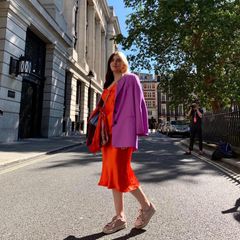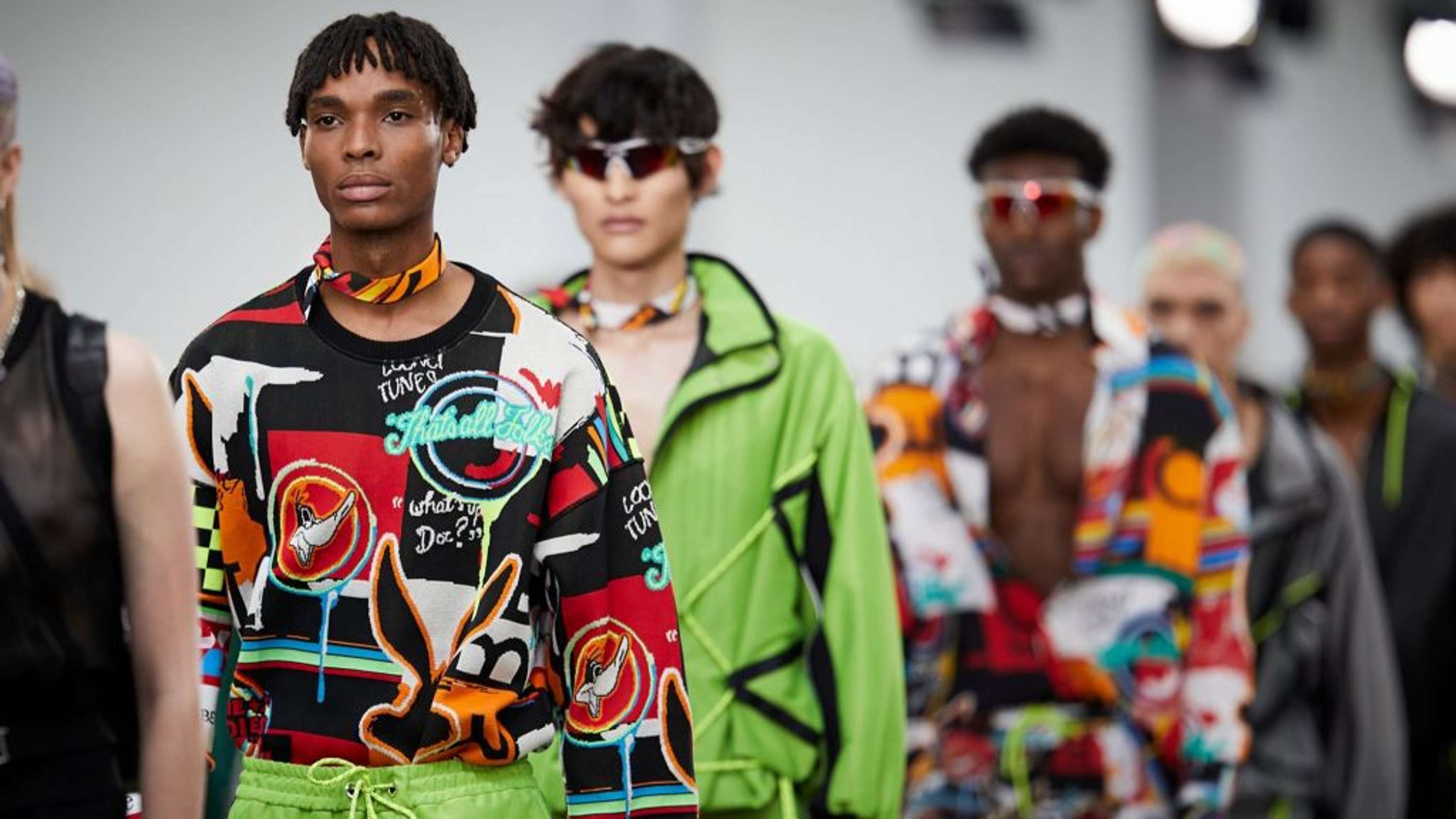London Fashion Week is historically a quarterly event divided into men’s and women’s weeks, with the BFC hosting the event since 1984. With much uncertainty lingering in the air, the fashion industry is forced to envision new ways of communicating and engaging in time of a crisis. For the first time in history, London Fashion Week shall become a gender-neutral event with a digital only platform.
The upcoming Fashion Week, set to take place between 12 and 14 June, shall not only be digitalised but merge both menswear and womenswear showcases to form a gender-neutral platform. With London known for its subversive and slightly rebellious style, it is no surprise it has become the first Fashion Capital to take the plunge and break down gender barriers. The merge shall provide a refreshing injection of newness to the fashion world. With front rows currently laid bare, and much of fashion on standstill, designers continue to create.
Caroline Rush, the Chief Executive of the BFC said in a statement, “The current pandemic is leading us all to reflect more poignantly on the society we live in […] The other side of this crisis we hope will be about sustainability, creativity and product that you value, respect, cherish.” “It is essential to look at the future and the opportunity to change, collaborate and innovate”.
The forthcoming virtual LFW shall be online and available for all, welcoming both industry insiders and fashion consumers alike. The online Fashion Week is set to feature a whole host of wholesome content. From interviews and podcasts with designers, to webinars and digital showrooms. Platforms such as Instagram Live, Zoom & YouTube shall provide industry access to the online community. The content is set to be rolled out on londonfashionweek.com The diversity of content will be in consequence to what designers are able to produce during self-isolation, and will reflect a new strain of branding, marketing and communication that has taken hold during the pandemic.
The rise in webinars and social communities is prevalent. Many brands have begun engaging with their customers more than ever before, in much more intimate ways. Alexander McQueen has recently seen the launch of McQueen Creators, a project which invites followers to create art, sketches, embroideries, via a series of digital tutorials on their Instagram feed. Bottega Venta is also hosting a Bottega Residency, with associated talent taking over their social channels and Lowe has launched En Casa, a series of online events and workshops via Instagram Live.
By opening up fashion shows to digital platforms, available to all, will make the fashion industry feel much more inclusive. With many fashion lovers dreaming of perching on the FROW next to the Fashion Queen herself, virtual Fashion Week will provide you the sought-after seat from the comfort of your own home. The infamous FROW is often packed with style icons and celebrities, with Vogue EIC’s blunt bob and dark shades unmissable. As many luxurious brands shelving their upcoming shows, we expect to see many more opting for virtual catwalks. Will the FROW continue to serve a purpose?
In regards to this topic, Baleciaga’s CEO Cedric Charbit, suggests the move to digital has already begun, we should roll with it and embrace it. Each season Charbit revealed Baleciaga exclusively invited around 600 guests to their physical show held at Paris Fashion Week, however over 8,000 people watched the show live streamed on YouTube, 60,000 watched the show live on Instagram and around 300,000 discussed the show on Twitter. “If you combine all this together with the replays [of the streams], we have an audience of over 10 million viewers,” said Charbit. “I think there is a digital reality that is already happening that one needs to embrace and face. Our audience has to be reconsidered.”
As the Covid pandemic puts much of Fashion Week on hold, there may be several drawbacks to the event become completely digitalised. In addition to manifesting and generating hype and anticipation around a brand’s latest collection, physical fashion shows also act as a crucial tool in gaining wholesale buyers. Looking at the physical garment samples in designer showrooms immediately after the runway, provides a close up look at the garments quality, textile and design. How will the fashion industry combat this issue if catwalks are held virtually and buyers are not allowed into designer showrooms physically.
London is not the first Fashion Capital to take the step online. Shanghai’s digital iteration went live in April with the help of Chinese e-commerce giant, Alibaba. Majority of the garments were under a ‘See now, Buy now’ scheme and available for purchase directly after the catwalk. Organisers also prepared digital showroom presentations, which saw designers talk through their collections in detail, piece by piece.
Tokyo and Moscow have also followed suit and held virtual Fashion Weeks due to the social distancing measures amid the current lockdown and restrictions.
With London Fashion Week set to take the digital plunge, to elevate the content shown on the platform, the BFC has enlisted the help of several tech giants; Amazon, Facebook, Google and Instagram as new brand partners.
“We are adapting digital innovation to best fit our needs today and something to build on as a global showcase for the future,” continues Rush. “Designers will be able to share their stories, and for those that have them, their collections, with a wider global community; we hope that as well as personal perspectives on this difficult time, there will be inspiration in bucketloads.”
Will the unprecedented pandemic fundamentally change the fashion show format forever? Only time will tell. As London is set for a Fashion Week shake up, it will be interesting to see the turn out for it’s newly integrated shows.
“It is what British fashion is known for.”



